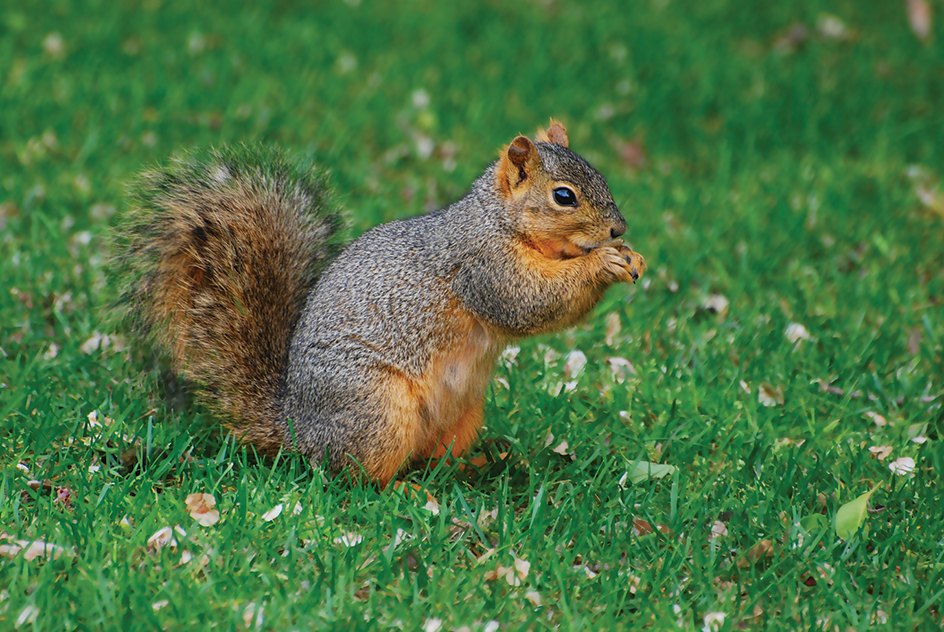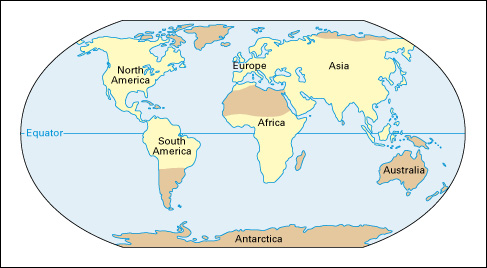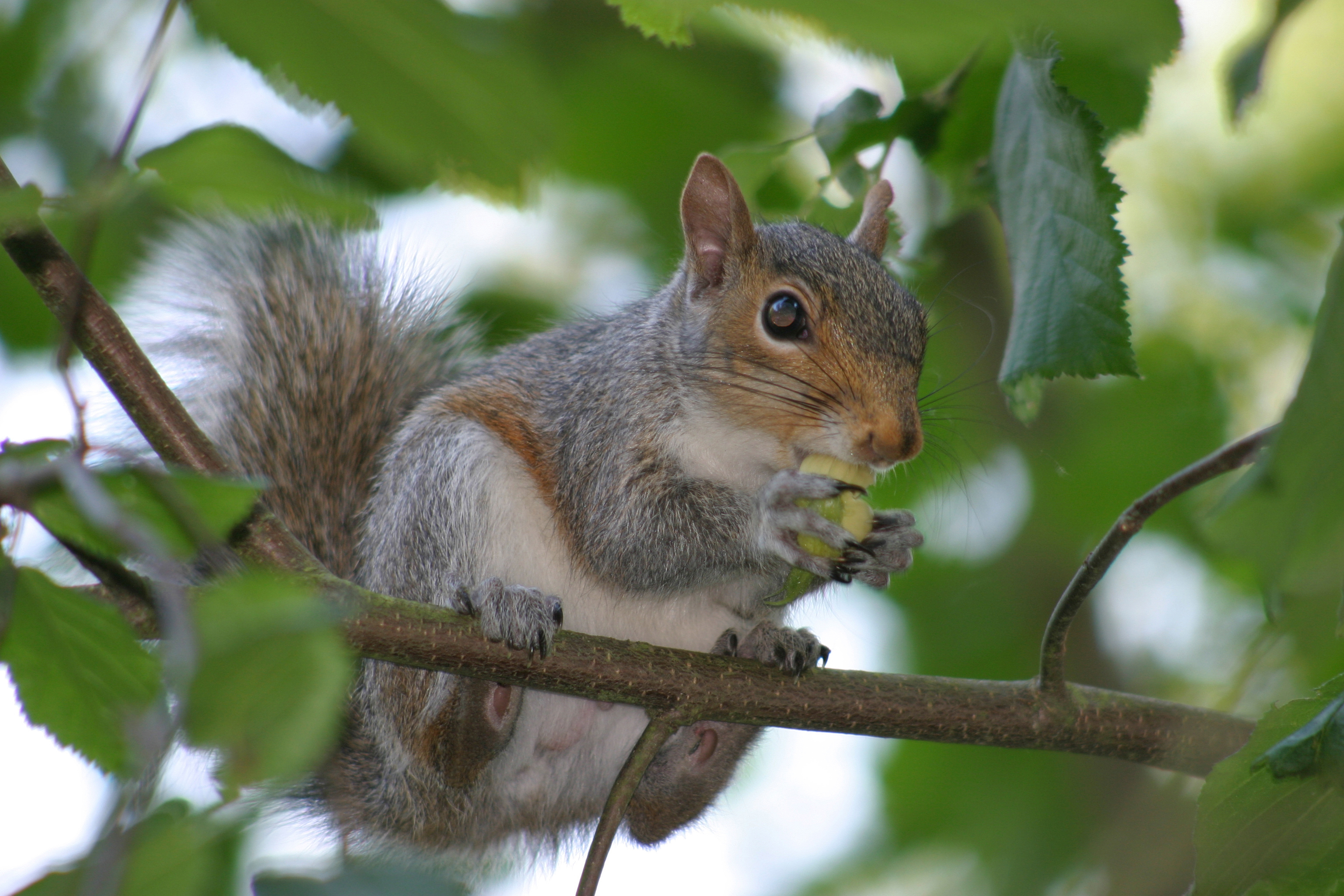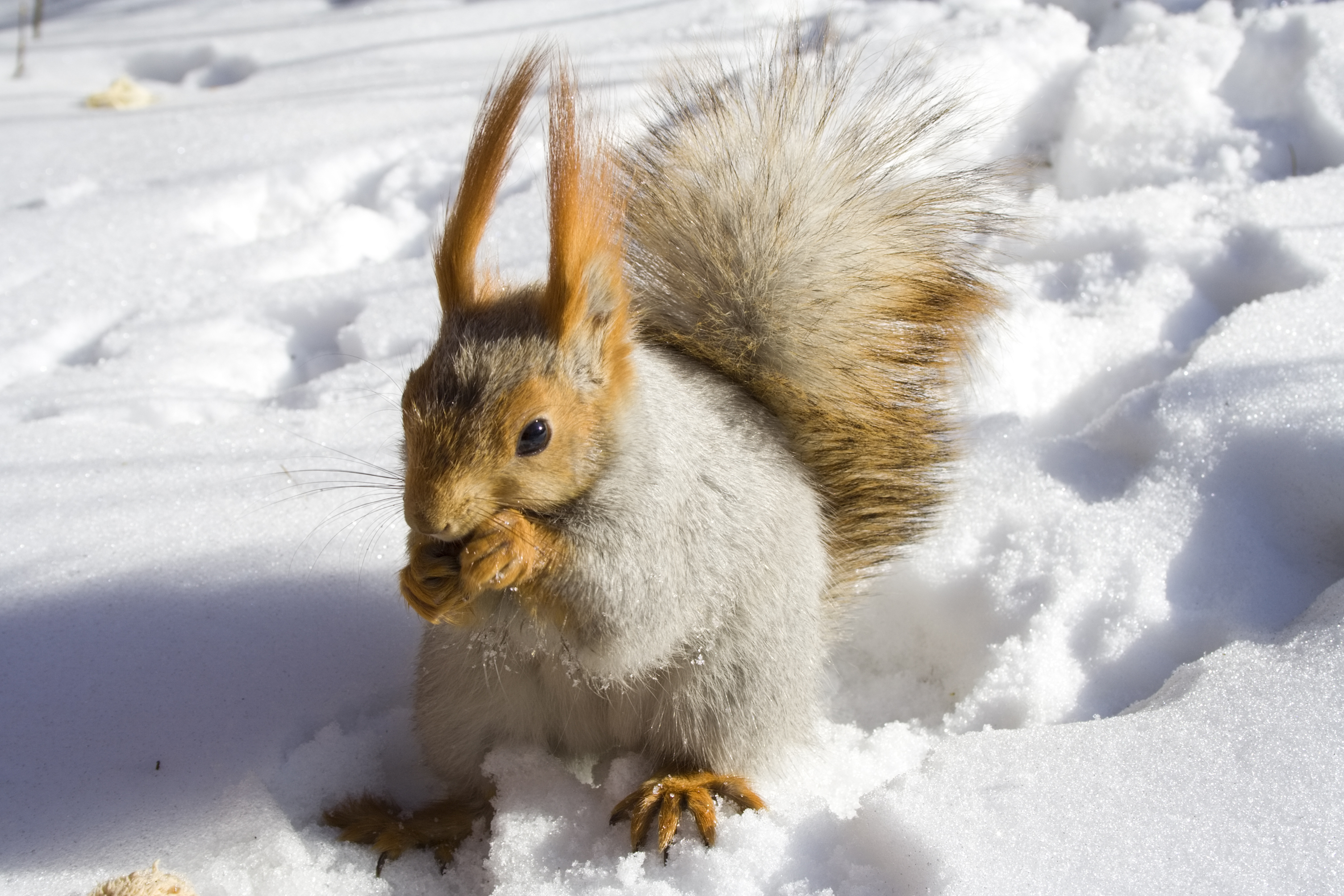Squirrel is any of a group of small to medium-sized gnawing animals with a long, cylindrical body; a furry tail; and powerful jaws. Squirrels are some of the most popular and easily recognized animals because of their curiosity, liveliness, and wide distribution. They live on every continent except Australia and Antarctica.

Types of squirrels
Squirrels make up one of the largest families of rodents (gnawing animals), the order to which beavers, mice, and rats also belong. The squirrel family, Sciuridae, consists of approximately 270 species (kinds). They may be divided into three general types: (1) tree squirrels, (2) flying squirrels, and (3) ground squirrels.
Tree squirrels
are tree-climbing, bushy-tailed animals that inhabit most of the world’s forests. They weigh from 1/3 ounce to 61/2 pounds (10 grams to 3 kilograms). They are active during the day. Familiar tree squirrels include the eastern gray and eastern fox squirrels of North America, the Eurasian red squirrel, and the giant and tricolor squirrels of Asia.

Flying squirrels
are tree climbers that have folds of skin between their front and back legs which enable them to glide long distances. They weigh from 3/4 ounce to 51/2 pounds (22 grams to 2.5 kilograms). They are nocturnal—that is, they sleep during the day and become active at night. Most flying squirrel species live in southern Asia. Two small species inhabit North America but are rarely seen because they are strictly nocturnal.
Ground squirrels
are compact, short-tailed, burrowing rodents that are especially abundant in open country, such as grasslands and tundra. The most common ground squirrels found in North America are the small, striped or spotted rodents that are actually known as ground squirrels. These squirrels belong to the genus Spermophilus.
Loading the player...Ground squirrels
Other types of ground squirrels include chipmunks, marmots, and prairie dogs. For more information on these animals, see the World Book articles on Chipmunk ; Ground squirrel ; Marmot ; Prairie dog ; and Woodchuck .
The origin and development of squirrels
Scientists believe that squirrels appeared early in the history of rodents. During the Cenozoic Era, beginning about 65 million years ago, forests of seed- and nut-bearing trees began to grow over much of Earth. The growth of such forests was probably a major factor in the evolution of squirrels. It accounts for many of the ways squirrels differ from other rodents. For example, squirrels have sharp incisor (front) teeth and powerful jaw muscles, well suited for gnawing through hard-shelled nuts and thick pine cones. Their sharp claws and flexible bodies help them grasp branches and leap from tree to tree. As a result, they can move easily through the treetops to get food and escape enemies. A squirrel’s furry tail acts as a “balancer” when the animal leaps and climbs. The tail also serves as a blanket when wrapped around the body or as a signaling device when waved vigorously from a high perch.

The life of squirrels
Obtaining food.
Squirrel behavior has been heavily influenced by the animal’s dependence on certain foods. Nuts, seeds, and pine cones are rich sources of energy. But they are hard to eat and may be available only at certain times of the year or in widely scattered areas. Squirrels must spend long periods searching for food and removing the food from its hard covering.
Loading the player...
Red squirrel

In areas with hot summers and cold winters, many kinds of seeds and nuts are abundant in late summer and fall. In these areas, squirrels often store large supplies of food in the ground, under fallen leaves, or in stockpiles near their nests that can be defended. A good memory and a keen sense of smell help squirrels find and retrieve the hidden food during the winter. Squirrels in most areas supplement their seed-and-nut diet with other foods, including bark, buds, eggs, fruit, fungi, insects, sap, and shoots. In the tropics, these softer foods may replace seeds and nuts completely.
Squirrel feeding habits often benefit the forest. Buried nuts, if not recovered, may grow into trees and help restore the forest. Squirrels also aid tree growth by digging up, eating, and dispersing certain underground fungi, which form beneficial associations, called mycorrhizae, with roots. The fungi absorb water and minerals from the soil and pass them on to the plant, receiving energy from the plant in return. Squirrels spread the indigestible spores of these fungi by releasing droppings in areas with young trees.
Obtaining shelter.
Second only to food in importance for squirrel survival is the availability of nests. Nests provide protection from heat and cold, a refuge from enemies, a place to raise young, and a storage site for food. A squirrel usually has more than one nest and can move quickly to an alternate nest if threatened.
Many tree and flying squirrels use different kinds of nests for winter and summer. The winter nest consists of a cavity in a tree trunk or branch lined with leaves, grasses, chewed bark, or other padding. The summer nest is a leaf nest consisting of twigs, leaves, vines, and other plant material woven into a ball in the fork of a tree branch. Some squirrel species use a leaf nest the year around. Such leaf nests are called dreys.
Raising young.
How far north a squirrel lives affects how often the animal mates and how many young are born in each litter. In the Far North, squirrels usually mate once a year, in late winter or early spring. The resulting litter consists of four to eight young. Farther south, squirrels may have a second litter, but the litter size is smaller. In the tropics, many small litters of one or two have been reported.
A female squirrel carries her offspring inside her body from 36 to 43 days before giving birth. Newborn squirrels are pink, hairless, and helpless. They cannot see because their eyelids are sealed shut. The mother cares for the babies alone. Tree squirrels live with their mother for about 8 weeks before they become independent. Flying squirrels require a longer developmental period, 10 weeks or more, perhaps because these squirrels need more time to master the techniques of gliding.
Territories and groups.
Most squirrels spend their lives moving about a home area. The size of a squirrel’s home area depends on the abundance of resources and the presence of potential mates. Males often have home areas that are much larger than those of females and may even include the ranges of a number of females. Some squirrels fiercely defend their territory. Most species, however, drive away intruders only if they threaten to invade the nest.

Most species of tree and flying squirrels live alone rather than in organized groups. Some species form mated pairs or family groups. Many species share nests, either in family groups or in temporary winter gatherings called aggregations. Aggregations help the animals keep warm by sharing their body heat.
Squirrels that do not form groups relate to one another according to a dominance hierarchy or “pecking order.” In such a hierarchy, larger, stronger, or older individuals dominate other animals and have first choice of food or mates.
Life span.
The life span of squirrels is roughly related to their size. Large species of squirrels tend to live longer than small species, are less vulnerable to predators (hunting animals), and leave fewer offspring. Small species, on the other hand, often suffer a high death rate from predators but have the ability to leave large numbers of offspring.
Squirrels may reach 10 to 12 years of age in the wild. Most squirrels, however, die much younger. Cats, foxes, hawks, snakes, weasels, and other predators kill large numbers of them. Food shortages, diseases, and parasites also take their toll.
Squirrels and people
Many species of tree squirrels may become used to people and seem quite tame. Squirrels do not make good pets, however, because of their wild nature.
A few species of squirrels may damage food crops, trees, and pastures, or invade houses or storage areas. Some occasionally carry plague and other diseases that can spread to human beings. Most people, however, enjoy squirrels as neighbors and want to protect them. Nevertheless, the major threat to many squirrel species worldwide is the destruction of their forest and grassland homes by human beings.
